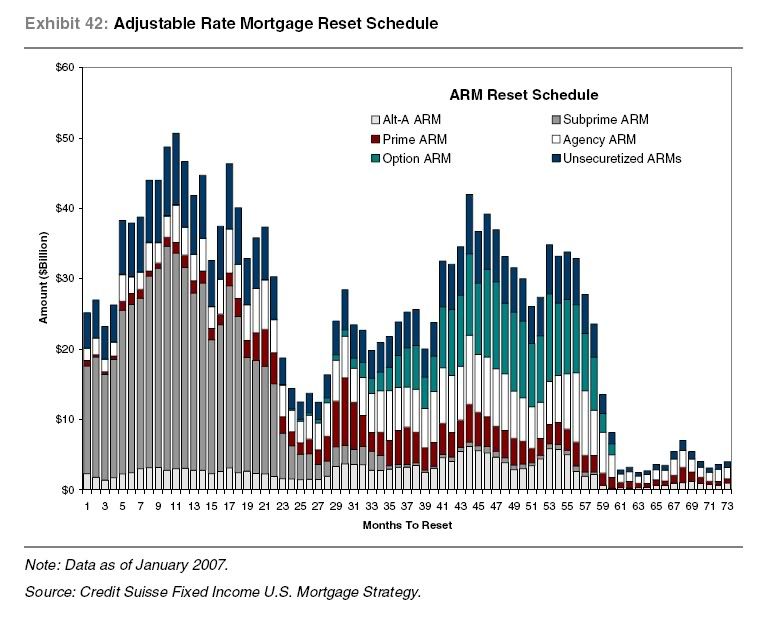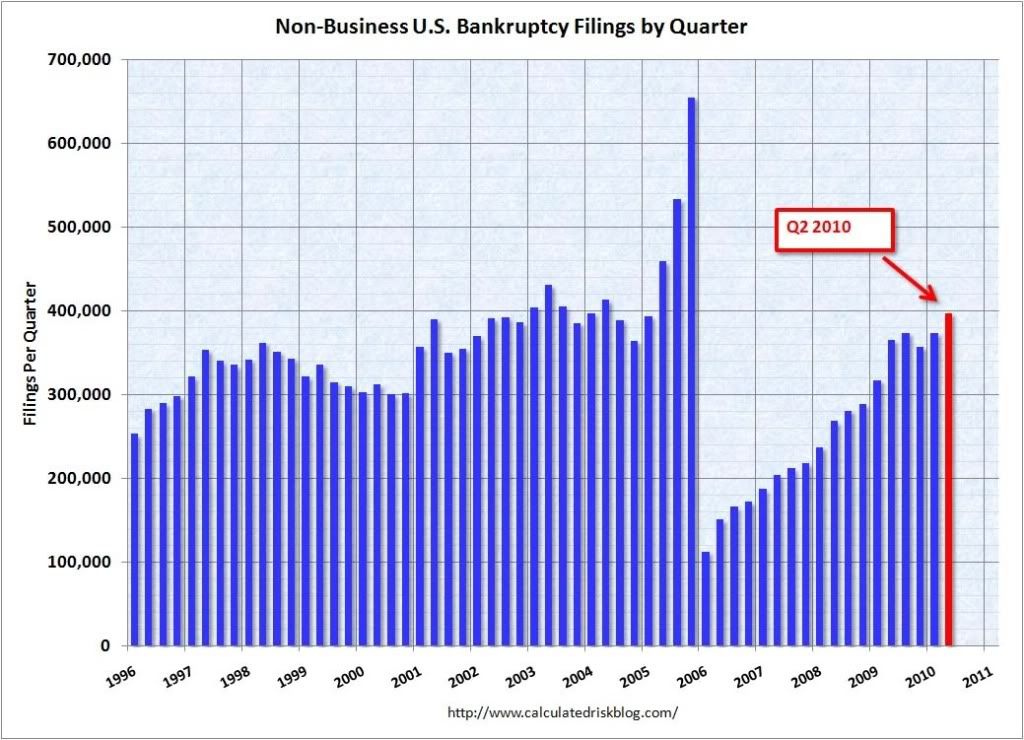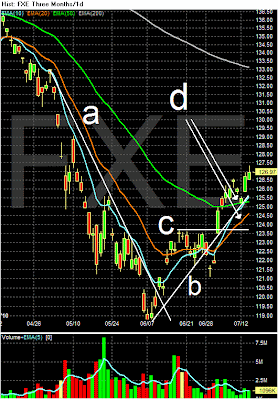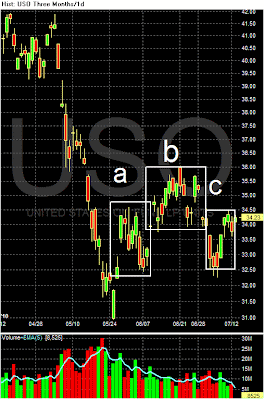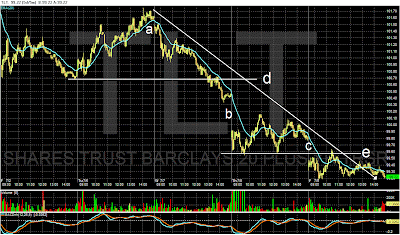- by New Deal democratHonorable Ladies and Gentlemen:
I certainly hope you all had a wonderful Fourth of July recess, and enjoyed the long summer holiday with your family, friends, and the contributors to your campaign chests.
If I might, though, I'd like to raise something else. You see, while you were enjoying the financial perquisites of power last week, a couple of other things happened: first, the long-term unemployed ran out of benefits. I'm not sure what you expect them and their children to do. Maybe roll up under a bridge somewhere out of sight and die? I'm not sure.
The second thing is, most states started a new fiscal year. State revenues collapsed by 20% in this recession, and while you helped them out last year, this year you've refused and so they are feeling the full brunt of that fall-off in revenue. And since the states, unlike you, can't just decide to print money, and many have gotten to the point where they just can't issue new bonds that will be soaked up by willing foreign backers, that means they have to cut. Severely. We're talking libraries and summer swimming pools and teachers and road maintenance and even fire stations and police. The estimates of jobs lost are all over the place, but all of them are in the six-figures.
I'm sure you'll agree -- well, I certainly hope you'll agree -- that sustaining several hundred thousand new job losses is the last thing that the still-fragile recovery needs to see. Back when you passed the economic stimulus plan in the first months of Obama's term, you may remember hearing testimony about a "multiplier effect". You put a lot of money into the system, and built a lot of new roads and made other improvements, and that money doesn't stop there, it suffuses throughout the community, creating new demand wherever it goes. Well, I hate to tell you but the reverse happens too. When you drain money out of the system, that too suffuses throughout the community,
destroying demand. That isn't good. That's what all this talk of a "double-dip" is all about, and having that kind of talk in the months right before voters decided whether or not to rehire you for the next term is probably the last thing you want.
I understand, you are reluctant to just give states another round of money. You've awakened after 10 years and discovered that we are running some tremendous budget deficits. You've also noticed, again after a 10 year hiatus, I'm not sure what that was all about, that the National Debt of $13 Trillion and counting, is a long-term structural problem and must be dealt with sometime soon. So, you've decided that the cupboard isn't exactly bare, but it's looking a little sparse, and you have refused to give the states any more money.
OK. I may not agree, but I understand where you are coming from. But what if I told you that you could help the states, you could save hundreds of thousands of jobs, and it wouldn't add a single penny to the National Debt? Would you be interested in that? Do I have your attention? Because it's true.
Ladies and Gentlemen of the Congress:
***LOAN*** the states the money. Don't give away a single dime. For example, if New York State was going to be given $5 billion, change it over to a $5 billion *loan*, and get it out the door now. New York gets the money immediately, doesn't have to close libraries or swimming pools or fire teachers or maintenance crews or firemen or police, it can continue to repair its infrastructure, and the United States of America will get the money back.
How should the loan work? Well, you can always K.I.S.S. You can simply require that after one or two years, the money must be paid back in quarterly installments over the next five years thereafter. Hopefully after a year or two, the states' balance sheets are fully repaired, and they will be paying the funds back during an economic expansion, when they can afford the cost in the budget. If you want to make it slightly more palatable, you can put in the proviso that the funds will be paid back on a schedule of 20 quarters - five years - for each quarter that (1) the GDP is growing; and (2) the GDP is higher than GDP has been in the 2nd quarter of 2010. That way you guarantee that states only have to pay back the money during an economic expansion, when their budgets can best take the hit.
You can charge interest too. The interest should accumulate at the same rate as inflation. That way you aren't getting paid back with inflated dollars, but real hard currency.
And it's as close to a sure thing as could be, that the Federal government will be paid back every penny. The Rockefeller Institute, that keeps track of state finances, estimated that the states' revenues probably bottomed out in about March. Incoming state revenues have been improving too. Here's the situation in May 2010 from 11 of them, including the biggest. Only one of them hasn't seen growth. And I can tell you that month after month, the comparisons have been getting better:
New York State: up 7.8%
Indiana up 5.5%
Texas up 1.5%
Tennessee up 3.7%
Alabama up 2.1%
Georgia up 9.0%
California up 13%
Florida up 6.0%
Pennsylvania up 7.5%
Ohio up 5.5%
Of all the states I was able to check, only
New Jersey reported a decrease in YoY sales tax revenues, down -3.3%.
So, here's what you are going to be able to tell the voters of your state, just before you stand for re-election: You rode to their rescue. Your state is getting $billions to avoid layoffs and shutdowns. And in the process of doing so, not a single dime will be added to the long-term National Debt. The ultimate beauty of it is, it is what economists' call "counter-cyclical". You spend during recessions and save during expansions. That's how Keynesian economics is supposed to work, and that's exactly what you are doing. Not just left wing economists like Krugman, but even right wing economists from the American Enterprize Institute who agree that we've got to continue stimulating the economy now, will support you.
It appears, by the way, that I am not the only one floating this idea. Last Thursday in the New York Times,
Berkeley Law School Dean Christopher Edley Jr., who was a Clinton White House official, wrote that
the failure to recognize the states as macroeconomic players [ ] helps explain our sluggish recovery.
[S]tates are managing huge budget crises with the only tools they have, cutting spending and raising taxes — both of which undermine the federal stimulus.
[ T]he best booster shot for this recovery and the next would be to allow states to borrow from the Treasury during recessions. We did this for Wall Street and Detroit, fending off disaster. It’s even more important for states.
Here’s how this would work.... Congress should pass legislation that would allow a state to simply get an “advance” on these future federal dollars expected from entitlement programs. The advance could then be used for regional stimulus, to continue state services and to hasten our recovery.
....
What would this cost the federal government? Nothing. There would be zero risk of default, and a guarantee of full repayment plus interest equal to what Treasury pays in the bond markets to borrow. Congress would need only to appropriate the administrative costs of this program, which would be minimal.
Edley's piece was widely seen as a "trial balloon." I strongly recommend that you endorse it. Would you rather do that, or would you rather face hostile questioning from your constituents at home in October about all the cutbacks in state and municipal services?
And while you are at it, you might want to think about the unemployed. If you are bound and determined not to directly create jobs in another WPA style program, and bound and determined not to give out any more extended unemployment benefits, you could at very least turn extended unemployment benefits into a loan that has to be paid back in full over time once they get a job and the economy is growing. Some states do that with their welfare benefits. It isn't what I'd want, but it's better than the alternative of asking them and their children to please go somewhere where you can't see them and die.
Peace and love, New Deal democrat













